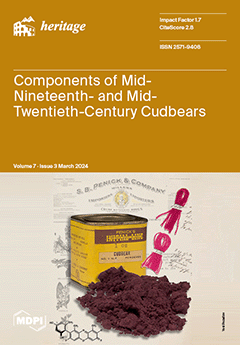The archaeological site of
villa Horta da Torre in Portugal reveals distinctive architectural features within the context of Roman
villae in Hispania. Notably, the
triclinium was designed with an artificial cascade originating from a double apse wall, and the walls were adorned with
[...] Read more.
The archaeological site of
villa Horta da Torre in Portugal reveals distinctive architectural features within the context of Roman
villae in Hispania. Notably, the
triclinium was designed with an artificial cascade originating from a double apse wall, and the walls were adorned with mosaic
tessellae panels and marble skirting. During the Roman era, the surrounding area belonged to the former province of
Lusitania, with
Augusta Emerita serving as its capital. This study examines 11 mortar samples from various contexts and functions, such as masonry, preparatory, render, and
opus signinum mortars. A set of complementary analytical techniques was employed to determine the textural and mineralogical compositions of the mortars. The aim was to gain insights into the production techniques and the selection of raw materials within the geological context of this rural construction. It was observed that the processing of raw materials and production techniques did not always adhere to the rules of Vitruvius. A comparison with other villas revealed comparatively less meticulous attention to sand selection and precise layering for mural painting. Nevertheless, it was noted that in preparatory layers for the
supranucleus and
nucleus tesserae, ceramic pieces were intentionally added to improve the mortar. The binder used was calcitic lime, likely obtained from locally sourced limestone. The nature of aggregates is diversified but consistent with the local geological provenance within a radius of less than 3 km, in accordance with two sand exploration sites. This research aligns with the United Nations’ 2030 Agenda for Sustainable Development, contributing specifically to SDG 11 and Target 11.4, which “aims to strengthen efforts to protect and safeguard the world’s cultural and natural heritage”.
Full article





